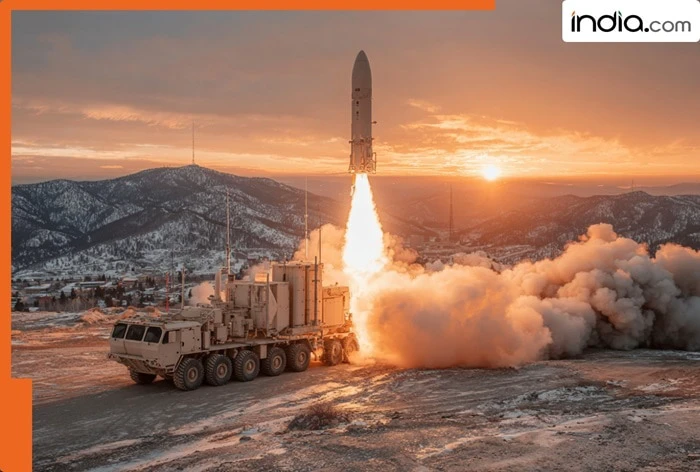China has shocked the world by secretly flying its most advanced fighter jet, the J-20 stealth aircraft, near Japan and South Korea, right under the nose of some of the world’s best air defense systems used by the U.S. and its allies.
For the first time, China flew its fifth-generation J-20 fighter through two very closely watched regions one near the Tsushima Strait (close to Japan and South Korea) and the other near the Bashi Channel (close to Taiwan). These areas are normally under tight surveillance by U.S., Japanese, and South Korean forces.
According to China’s state TV channel CCTV, the J-20 completed this mission without being detected by any radar. China claimed that no military, not even the U.S., Japan, or South Korea, noticed the aircraft.
China shows off its power near key sea routes
China recently flew its advanced J-20 stealth fighter jet near two highly sensitive sea routes which is the Tsushima Strait and the Bashi Channel, in what many see as a show of military strength.
The Tsushima Strait, located between Japan and South Korea, is a narrow and strategically important waterway. It is closely watched by advanced radar systems and protected by the U.S.’s THAAD (Terminal High Altitude Area Defense) system, one of America’s most powerful missile defense technologies. Japan and South Korea also have several Patriot missile batteries and radar systems guarding the area.
Despite all this, China claims its J-20 jet flew through the region without being detected. If true, this is a bold challenge to the U.S. military, which has a strong presence in the region.
About China’s J-20 Fighter Jet
The J-20 is considered the main fighter jet of China’s air force, known as the People’s Liberation Army Air Force (PLAAF). This stealth aircraft is equipped with long-range PL-15 missiles and uses advanced technology to stay almost invisible to radar.
In 2025, China made a breakthrough using Silicon Carbide (SiC) semiconductors, which helped boost the detection range of the J-20’s AESA radar to nearly 1,000 kilometers. That’s far more than the U.S. F-35 fighter, which has a radar range of about 200 to 300 kilometers.
According to the U.S. Pentagon, by the end of 2024, China will have over 400 J-20 jets, making it the largest fleet of stealth fighter jets in the world. Currently, China is producing around 120 J-20s every year, while the U.S. builds about 150 F-35s annually.
Why this flight is a gamechanger for China
According to China’s state media CCTV, the country’s “first combat brigade” is now regularly flying missions over the Tsushima Strait and Bashi Channel, and also patrolling around Taiwan. This is the same unit that first brought the J-20 stealth jet into active service.
Experts say this recent flight shows a major shift in China’s military strategy, the J-20 is no longer just a defensive weapon, but is now being used for offensive and strategic operations.
China’s announcement also comes at a tense moment, as Japan and China have recently accused each other of violating their respective airspaces. By sending the J-20 into such heavily monitored regions, China is signaling both its confidence in its stealth technology and its growing military assertiveness in the region.
J-20 vs America’s THAAD and F-35
China’s recent stealth mission using its J-20 fighter jet has created serious concern for the U.S. and its allies. Despite spending billions on advanced defense systems like THAAD and Patriot missile batteries, none of them were able to detect or track the J-20. Even more worrying is that experts say the J-20’s radar range and weapons now rival those of America’s F-35 stealth jet.
Analysts believe that the J-20 is not just technologically advanced, but it’s also starting to shift the balance of power in the region. China has even claimed that in the future, the J-20 could be modified to carry nuclear weapons.
